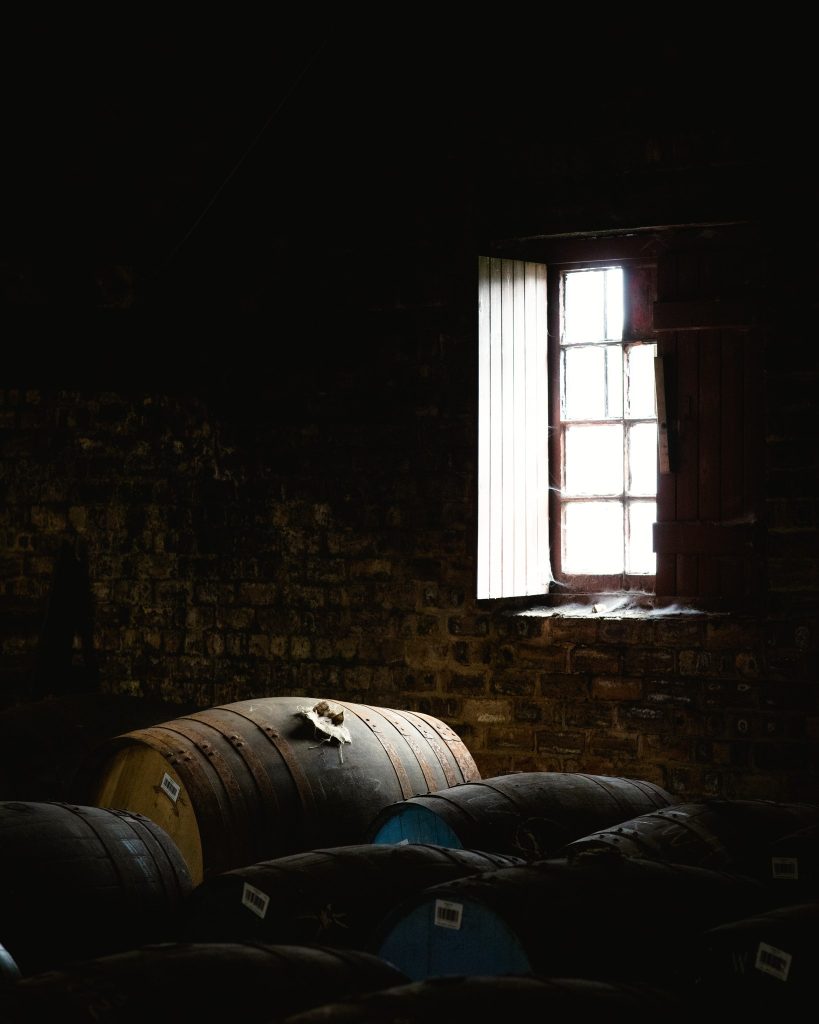Finishing in Scotch Whisky
Author: Barbara Drew MW

Scotch whisky distillery Tomatin produces a beautiful and delicate single malt whisky, which is incredibly approachable. For one week a year, they also produce a whisky made with very lightly peated barley, called Cù Bòcan. It is this spirit that forms the base of Creations, a series of releases showcasing different aspects of their whisky by using different finishing barrels. But how does finishing work? Whilst enjoying and finishing a bottle of whisky might be easy, finishing as an ageing process is an art that requires lots of considerations. Barbara Drew MW delves into them below.
Whisky. In many ways, a simple spirit. After all, it’s just barley, yeast, and water, right? Well, not exactly. There is a fourth ingredient, and it is mandatory – oak. To be labelled as Scotch whisky, a spirit must be aged in oak barrels, of 700 litres or less, for three years or more.
However, a brand new, fresh-from-the-cooperage oak barrel contains a huge amount of flavour – from the toast on the inside of the staves, to the vanillins and lactones in the oak (that taste of vanilla and cream respectively). These flavours are very easily extracted into high-strength alcohol like the new-make spirit (new-make refers to the freshly distilled spirit, normally around 65-70% as it comes off the still). Three years’ ageing in a new barrel would overwhelm the subtle flavours of the barley in the new-make, resulting in a harsh, tannic and excessively oaky spirit.
Instead, producers use old oak barrels, which have already been used to store spirits (or sometimes wines). The barrels have thus given up the majority of their more intense flavours. Many of these older barrels formerly held Bourbon. When making Bourbon, producers must use only brand new oak casks. After a few years, once the Bourbon is bottled, the casks need a new home. There is therefore a healthy trade in once-used, ex-Bourbon barrels to Scotland.
This is great news for Scotch fans, as these barrels impart all sorts of delicious flavours to the whisky, from coconut to vanilla and sometimes a delicate toffee note too.
Bourbon barrels are not the only oak barrel used to age Scotch whisky though. You may have heard of Sherry cask whisky, and Sherry casks are very popular amongst whisky makers. These barrels are generally made from European oak – either French or Spanish – and often lend slightly spicier notes to the whisky. Depending on what type of Sherry was originally aged in the cask, some of those flavours will also end up in the whisky too, with walnut and raisin notes from Oloroso Sherry casks and almond and olive notes from a Fino Sherry cask.
Different ingredients in the blend
Alongside spirits barrels, many wine producers sell casks to whisky distilleries, and whiskies are often “finished” in these casks – spending the last year or so of their maturation gathering an additional array of flavours in these barrels. This can lead to a wide diversity of styles. For those who like their whiskies with a hint of raisins and dark chocolate, those finished in Port casks are perfect; for more subtle marmalade, honey and saffron notes, a whisky finished in a Sauternes cask may suit.
Other spirits producers may also share casks for finishing, with a focus in recent years on different types of rum casks lending their intense fruit characters, or even Tequila barrels, which add a subtle peppery zing to spirits aged in them.
This process of finishing a whisky, though, is not just about adding another flavour to the spirit. Think of it instead as a tweak to the recipe to highlight different aspects of the underlying spirit. Scotch whisky producers can produce subtly different styles of spirit by experimenting with fermentation, distillation and maturation. Finishing adds another element, a way to spotlight certain flavours within the spirit, and accentuate them using the flavours in the finishing barrel.
Such a process works best when the spirit is not overwhelmed by these flavours, but merely complemented by them, something achieved to great effect by Tomatin’s Creations series.
Finished Creations
Each of the Creations releases showcases the effect of a different finishing barrel (or two). For example, Creations #6 has been finished in Pedro Ximenez (PX) Sherry casks and Jamaican rum casks. These two types of cask work very well together, with the PX casks adding a rich, almost treacley raisin character to the spirit. The Jamaican rum casks bring tropical fruit characters; Jamaican rums are known for their particularly pungent banana and pineapple aromas. There is also a lovely ginger spice as well, accentuated by this finishing regime.
Together, the result is a smooth and delicate whisky, interwoven with subtle notes of ripe tropical fruit, brown banana, raisins and ginger. This is all offset beautifully by the slight tang of peat smoke, acting as a counterpoint to the fruit.
Of course there are as many different styles of cask finishes as there are distilleries in Scotland. Work your way through a few to explore the different ingredients and decide which is your perfect finish.
Cù Bòcan Creation #6 is available here


